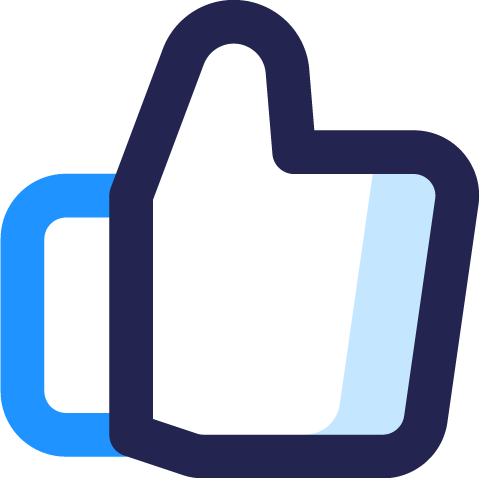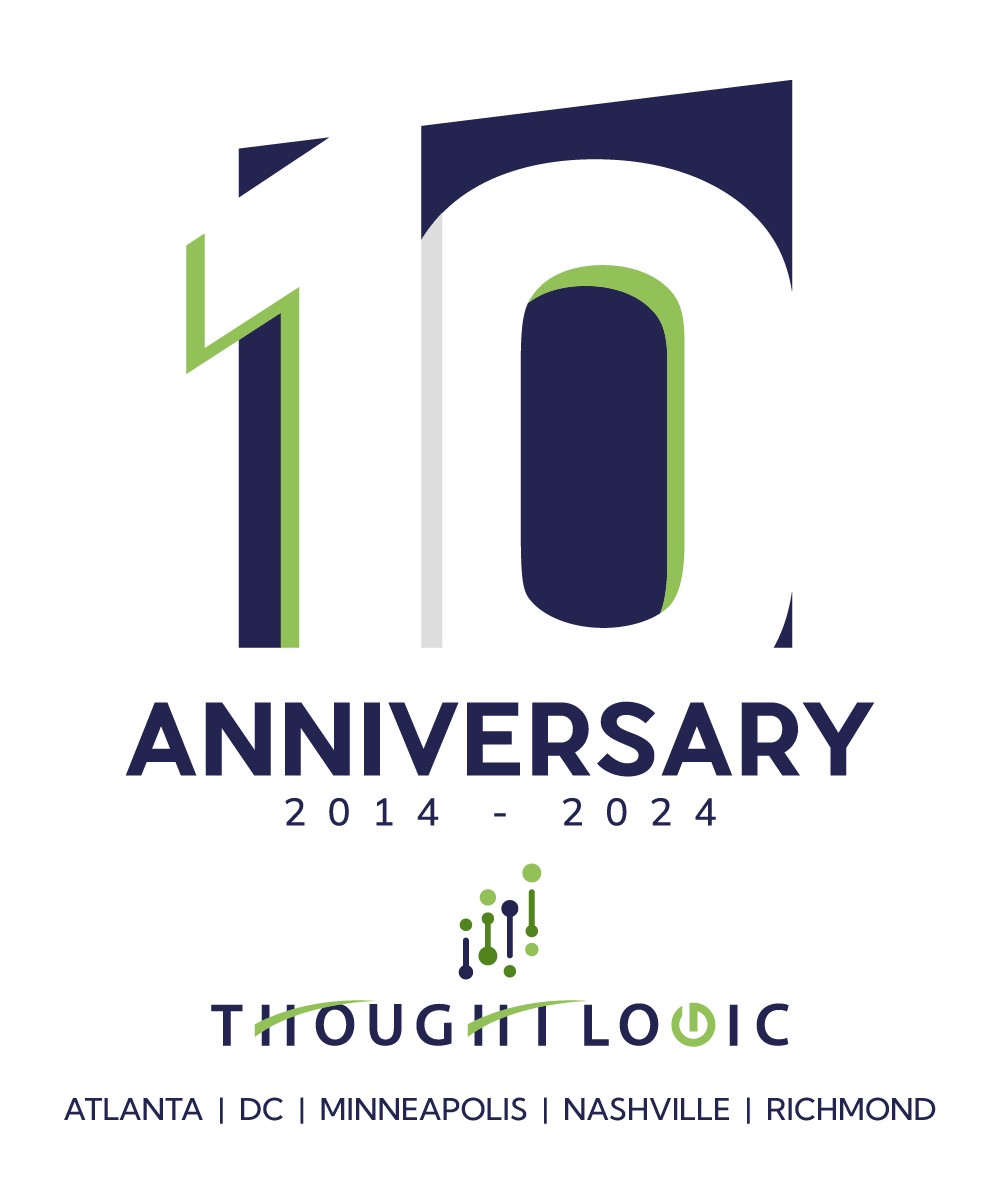How The Great Resignation and Hybrid Work Dated Onboarding and Offboarding Processes Overnight
The entire world went on lockdown due to COVID-19 back in Q1 of 2020. In case your mind has already repressed this traumatic event… it wasn’t fun. But, like iron refined by fire, in many ways it changed business for the better. Only 5 years ago I was writing business continuity plans that would draw a collective yawn from leaders today. Entire companies and enterprise-functions that were once bound to the confines of a physical office to be productive are no longer restricted in the same way. Perhaps not surprising, COVID ignited several interesting trends in technology.
In an attempt to slow the spread of the virus, virtual and hybrid work environments were cobbled together and rapidly adopted. However, for many businesses, it appears that hybrid work is here to stay. A 2021 Willis Towers Watson survey determined that 58% of companies plan to keep their alternative work arrangements going forward, compared to less than 15% with such accommodations just two years earlier. A 2021 Microsoft survey showed that 73% of employees agreed, wanting flexible work arrangements to remain.
The ‘why’ behind the Great Resignation on the other hand, is a bit more complex. Regardless of why so many employees have gone seeking a new home, PEW research notes that the nation’s quit rate reached a 20-year high last November, companies are still reeling from these high turnover rates and struggling to remain attractive and keep talent in-house.
High employee churn coupled with the prevalence of more flexible and dispersed work environments have wreaked havoc on traditional IT onboarding and offboarding efforts. Combining high-churn and virtual work arrangements with manual, onerous, and outdated onboarding and offboarding processes have given rise to a whole host of new challenges that often feed into the cycle of employee attrition itself.
The impact of companies not addressing these new challenges is often far-reaching and not fully contemplated:
- New security vulnerabilities
- Frustrated and overworked internal teams
- Confused and unproductive new joiners with poor first impressions
- Negative final impressions of departing colleagues
- Redundant CapEx and needless OpEx spend
- And an unnecessarily high level of effort in repeatable tasks leading to a loss in productivity
Many companies are taking initial measures to ensure that they have coverage of their internal onboarding and offboarding processes:
- Attempts to ramp up internal team size to support the increased throughput demand
- New employees performing “shadow work” while waiting for equipment and access
- Procuring new end-user equipment reactively for new joiners while simultaneously building a cache of unprocessed equipment
- Ad-Hoc initiatives to posthumously identify and revoke/reclaim dormant active access credentials and software licenses & seats
These are good and necessary first steps, but they are not sufficient if companies want to set their environments up for the long term. As the smoke clears it’s time to take a step back and consider a holistically better way to tackle IT onboarding and offboarding. We all got burned, but did we take advantage of the heat to refine and harden our mettle? The ROI on the reactive measures above are likely net-zero or worse. Onboarding and offboarding still occurs, but at an increased cost and lower quality of service due to the sheer volume of throughput and decentralized nature of hybrid environments.
The end-state resolution lies in establishing a set of processes and a common technology platform (e.g., ServiceNow and its myriad of legitimate competitors) that follow industry leading ITIL practices. What is ITIL? It stands for Information Technology Infrastructure Library, which is basically an attempt to build a logical guide or framework in which IT can standardize business processes and generate cohesive data that connects needs & opportunities with valuable outputs. IT Departments can then leverage and expand the platform as an asset for the business it supports. According to TechMonitor ITIL is “the most widely recognized framework for IT and digitally-enabled services that helps 90 percent of Fortune 500 companies to gain optimal value.”
Onboarding and Offboarding are just small facets of a much larger “ITIL Iceberg” (albeit crucial ones). Establishing a cross-department and inter-application technology platform and leveraging ITIL concepts will naturally lead to robust, resilient, and efficient processes that negate risk, shorten delivery windows, and increase user experience.
Focal Points
Below are some of the most common areas companies focus on improving. There is no single right path to maturity in these areas, and most businesses do not require a solution in every area. But, regardless of where the journey starts, chances are that the platform will expand in an organic and delightfully interconnected way as the enterprise begins to realize the benefits:
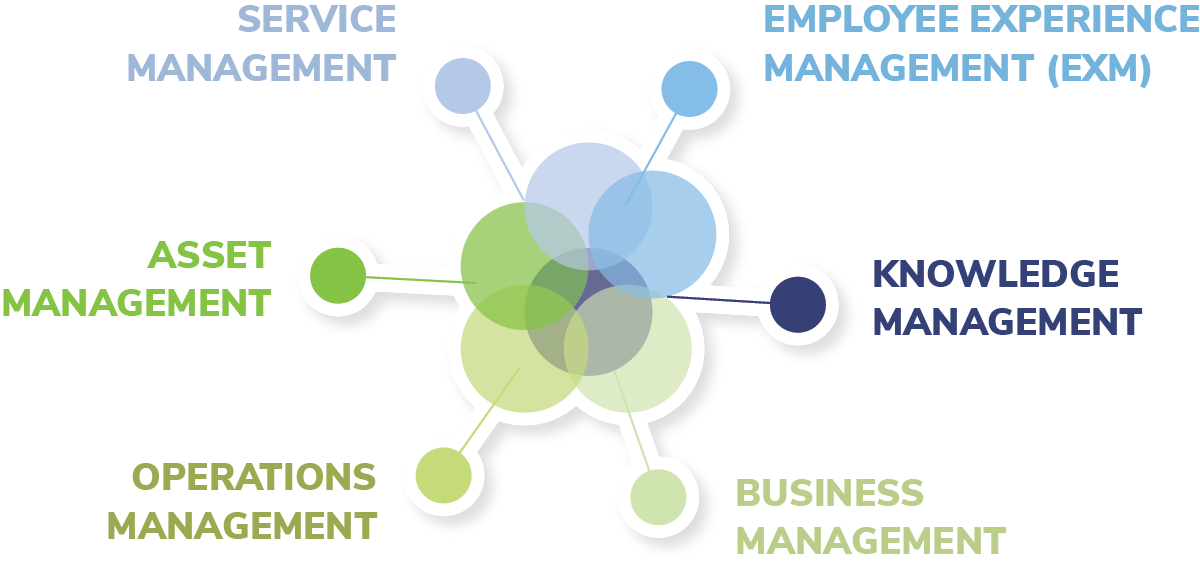
- Service Management
- Request and Incident Management, and later Virtual Agents, AI, and ML
- Change & Release Management
- Knowledge Management
- Including ticket/case deflection
- Business Management
- Innovation/Ideation and Demand Pipeline Management
- Project, Program, and Portfolio Management
- Time and Resource Management
- Operations Management
- Configuration Management Database (dynamic referenceable IT Landscape)
- Dependency and Service Mapping (visually connecting associated IT components)
- Event Management (automating alerts, incidents and their associated business and application services)
- Asset Management
- Hardware Asset Management including full lifecycle, audit reporting, and of course on and offboarding
- Software Asset Management including SaaS seat licenses, end-user device title reclamation, and compliance
- Enterprise Service Management
- Employee Experience Management (EXM)
- Employee Center/Portal, and Workflow Management
- HR Service Delivery including case and knowledge management
- Ancillary Service Management for Finance, Supply Chain, Procurement, etc
- Customer and Field Service Management
Proper onboarding and offboarding processes (sitting primarily in the IT and Enterprise Service Management practices above) should ultimately and ideally include integrations, automations, and a logical series of unique tasks and approvals across IT that seamlessly tie together:
- Recruiting Platforms
- HR Systems
- Learning Management Systems
- Hardware Procurement Vendors
- SaaS Providers
- End-user Data & Configuration Management Systems (like Microsoft’s SCCM/MECM)
- Hardware and Software Asset Management Modules
- A Configuration Management Database (CMDB) that includes end-user devices
Additionally, these processes should prompt IT and HR collaboration around leading Employee Lifecyle Experience practices like:
- Peer advisors
- Self-service including knowledge articles upon onboarding, and
- Formal exit interviews that generate reportable & actionable data upon offboarding
Moving Forward
The best place to start the process is with a formal ITIL-focused maturity assessment. An honest current-state assessment that takes into consideration people, process, and technology across the spectrum of opportunities and is vital in road mapping against sound strategy as many of these functions are surprisingly interconnected.
Maybe it won’t be on/offboarding woes that ultimately lead you to consider an ITIL-based solution or product. Perhaps it will come from a desire to improve some other process like request & incident intake or automation, an inquiry into a cost saving measure like Software Asset Management, or even a forward-looking proactive initiative such as building out a mature and integrated CMDB. Regardless, the goal of the maturity assessment is to create a bespoke layered collection of fit-gap analyses across business-appropriate functionalities with consideration for logical dependencies. The output can then serve as a foundational launch pad for executive decisions and winning roadmaps.
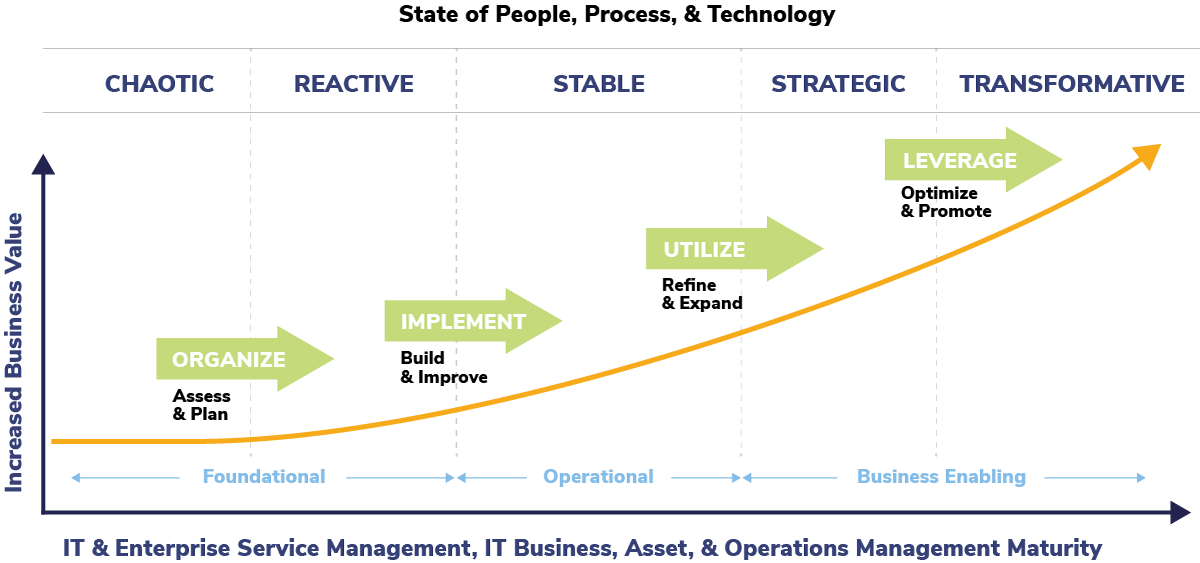
Just as Finance relies on an ERP, and HR an HRMS, IT needs a single platform that, among many other mission critical responsibilities, drives automated and tactical cross-team workflows and can integrate with many different enterprise systems and services. Even the most organized collection of siloed applications & business services, circulated Visio and Excel files, and studious email habits will fall short of the power, insight, accountability, and efficiency of a single system of record built within one unified platform.

About Digital Enablement
Thought Logic’s Digital Enablement smartSolution provides full-circle capabilities that help keep organizations keep ahead of digital change.
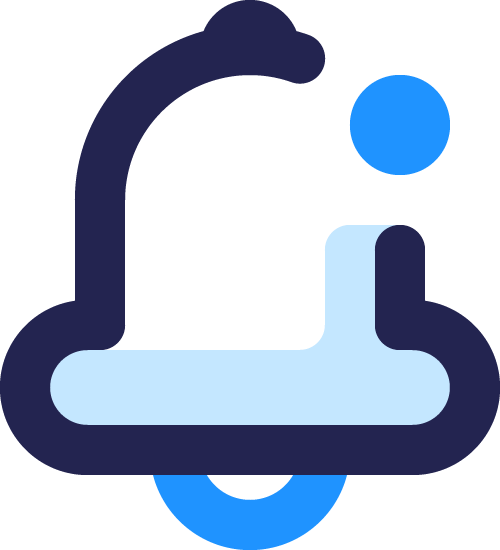
Sign up to receive future Insights in your email box.
Never miss an update.
